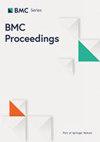Maximilian J Hochmair, Mojca Unk, Jelena Spasic, Timur Cerić, Assia Konsoulova, Mircea Dediu, Krisztina Bogos, Alinta Hegmane, Kersti Oselin, Marko Stojiljkovic, Tina Roblek, Marko Jakopovic
下载PDF
{"title":"中欧和东欧在表皮生长因子受体外显子 20 插入突变方面未满足的需求:报销、诊断程序和治疗的可用性。","authors":"Maximilian J Hochmair, Mojca Unk, Jelena Spasic, Timur Cerić, Assia Konsoulova, Mircea Dediu, Krisztina Bogos, Alinta Hegmane, Kersti Oselin, Marko Stojiljkovic, Tina Roblek, Marko Jakopovic","doi":"10.1186/s12919-023-00287-6","DOIUrl":null,"url":null,"abstract":"<p><p>Lung cancer remains the leading cause of cancer-related deaths in Europe, with non-small cell lung cancer (NSCLC) accounting for approximately 85% of cases. NSCLC is a heterogeneous disease encompassing various oncogenic alterations. Among them, EGFR exon 20 insertion mutations, constituting 0.3-2.2% of NSCLC cases, rank as the third most common EGFR alteration after exon 19 deletions and the L858R point mutation in exon 21, also known as \"typical\" EGFR alterations. Recent advancements in understanding the molecular pathogenesis of NSCLC have led to significant breakthroughs in targeted therapies, revolutionizing treatment options for patients with specific genetic alterations.This article presents the outcomes of a Virtual Meeting conducted on the online platform (provided Within3©) from September 19 to October 30, 2022. The meeting focused on addressing the challenges in the diagnosis and treatment of NSCLC patients with EGFR exon 20 insertion mutations. The participants consisted of healthcare professionals from ten Central and Eastern European countries who shared their experiences and opinions on various aspects, including epidemiology, treatment options, and diagnostic approaches employed in their respective healthcare institutions. The discussions were facilitated through open-ended and multiple-choice questions.The primary objective of this article is to provide an overview of the identified challenges associated with the diagnosis and treatment of this heterogeneous disease, based on the assessments of the meeting participants. Among the major emerging challenges discussed, the reimbursement issues concerning next-generation sequencing (NGS), a recommended method in NSCLC molecular diagnosis, and the availability of approved targeted treatments to enhance patient outcomes were of paramount importance. Furthermore, fostering community awareness of lung cancer and promoting harmonized lung cancer care were identified as areas deserving greater attention. Notably, the rapidly evolving treatment landscape, particularly with NGS for NSCLC patients with genomic alterations like EGFR, ALK, RET, MET, NTRK, and ROS1, necessitates prioritizing the development of new drugs, even for the relatively smaller subgroup with exon 20 insertion mutations.</p>","PeriodicalId":9046,"journal":{"name":"BMC Proceedings","volume":"18 Suppl 3","pages":"2"},"PeriodicalIF":0.0000,"publicationDate":"2024-01-18","publicationTypes":"Journal Article","fieldsOfStudy":null,"isOpenAccess":false,"openAccessPdf":"https://www.ncbi.nlm.nih.gov/pmc/articles/PMC10795200/pdf/","citationCount":"0","resultStr":"{\"title\":\"Unmet needs in EGFR exon 20 insertion mutations in Central and Eastern Europe: reimbursement, diagnostic procedures, and treatment availability.\",\"authors\":\"Maximilian J Hochmair, Mojca Unk, Jelena Spasic, Timur Cerić, Assia Konsoulova, Mircea Dediu, Krisztina Bogos, Alinta Hegmane, Kersti Oselin, Marko Stojiljkovic, Tina Roblek, Marko Jakopovic\",\"doi\":\"10.1186/s12919-023-00287-6\",\"DOIUrl\":null,\"url\":null,\"abstract\":\"<p><p>Lung cancer remains the leading cause of cancer-related deaths in Europe, with non-small cell lung cancer (NSCLC) accounting for approximately 85% of cases. NSCLC is a heterogeneous disease encompassing various oncogenic alterations. Among them, EGFR exon 20 insertion mutations, constituting 0.3-2.2% of NSCLC cases, rank as the third most common EGFR alteration after exon 19 deletions and the L858R point mutation in exon 21, also known as \\\"typical\\\" EGFR alterations. Recent advancements in understanding the molecular pathogenesis of NSCLC have led to significant breakthroughs in targeted therapies, revolutionizing treatment options for patients with specific genetic alterations.This article presents the outcomes of a Virtual Meeting conducted on the online platform (provided Within3©) from September 19 to October 30, 2022. The meeting focused on addressing the challenges in the diagnosis and treatment of NSCLC patients with EGFR exon 20 insertion mutations. The participants consisted of healthcare professionals from ten Central and Eastern European countries who shared their experiences and opinions on various aspects, including epidemiology, treatment options, and diagnostic approaches employed in their respective healthcare institutions. The discussions were facilitated through open-ended and multiple-choice questions.The primary objective of this article is to provide an overview of the identified challenges associated with the diagnosis and treatment of this heterogeneous disease, based on the assessments of the meeting participants. Among the major emerging challenges discussed, the reimbursement issues concerning next-generation sequencing (NGS), a recommended method in NSCLC molecular diagnosis, and the availability of approved targeted treatments to enhance patient outcomes were of paramount importance. Furthermore, fostering community awareness of lung cancer and promoting harmonized lung cancer care were identified as areas deserving greater attention. Notably, the rapidly evolving treatment landscape, particularly with NGS for NSCLC patients with genomic alterations like EGFR, ALK, RET, MET, NTRK, and ROS1, necessitates prioritizing the development of new drugs, even for the relatively smaller subgroup with exon 20 insertion mutations.</p>\",\"PeriodicalId\":9046,\"journal\":{\"name\":\"BMC Proceedings\",\"volume\":\"18 Suppl 3\",\"pages\":\"2\"},\"PeriodicalIF\":0.0000,\"publicationDate\":\"2024-01-18\",\"publicationTypes\":\"Journal Article\",\"fieldsOfStudy\":null,\"isOpenAccess\":false,\"openAccessPdf\":\"https://www.ncbi.nlm.nih.gov/pmc/articles/PMC10795200/pdf/\",\"citationCount\":\"0\",\"resultStr\":null,\"platform\":\"Semanticscholar\",\"paperid\":null,\"PeriodicalName\":\"BMC Proceedings\",\"FirstCategoryId\":\"1085\",\"ListUrlMain\":\"https://doi.org/10.1186/s12919-023-00287-6\",\"RegionNum\":0,\"RegionCategory\":null,\"ArticlePicture\":[],\"TitleCN\":null,\"AbstractTextCN\":null,\"PMCID\":null,\"EPubDate\":\"\",\"PubModel\":\"\",\"JCR\":\"Q2\",\"JCRName\":\"Biochemistry, Genetics and Molecular Biology\",\"Score\":null,\"Total\":0}","platform":"Semanticscholar","paperid":null,"PeriodicalName":"BMC Proceedings","FirstCategoryId":"1085","ListUrlMain":"https://doi.org/10.1186/s12919-023-00287-6","RegionNum":0,"RegionCategory":null,"ArticlePicture":[],"TitleCN":null,"AbstractTextCN":null,"PMCID":null,"EPubDate":"","PubModel":"","JCR":"Q2","JCRName":"Biochemistry, Genetics and Molecular Biology","Score":null,"Total":0}
引用次数: 0
引用
批量引用

 求助内容:
求助内容: 应助结果提醒方式:
应助结果提醒方式:


